
Sri Lanka
For a full scale picture, please click on the picture shown !

Sri Lanka Railways class M8 diesel engine leading a passenger train into the station of Hikkaduwa in Sri Lanka.
The railways of Sri Lanka are of British origin. Main lines are 1676 mm broad gauge and most locomotives are diesels.
This is a class M8 diesel electric machine, built by the Diesel Locomotive Works at Varanasi, India since 1995. It
weighs 112,8 tons, has a maximum speed of 120 km/h and has a power rating of 2100 kW.
Picture 6.2.2013 in Hikkaduwa by Heikki Hemmilä.
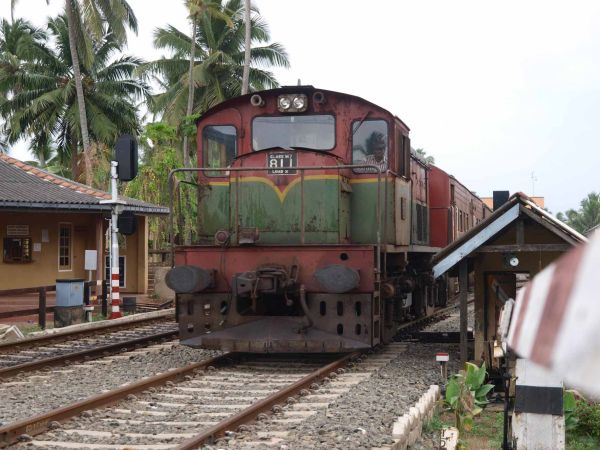
A class M7 diesel engine of Sri Lanka Railways SLR with three old coaches is here approaching a level crossing by a small station near Hikkaduwa.
The class M7 is a diesel electric machine built by Brush Traction in the UK and imported into Sri Lanka in 1981. 16 machines were built.
The machine weighs 66 tons, has a top speed of 80 km/h and a very modest power rating of only 741 kW. Its engine is a GM 8-645E from General Electrics.
They are mostly used in short distance passenger services, such as here.
Picture 21.5.2015 near Hikkaduwa by Heikki Hemmilä.
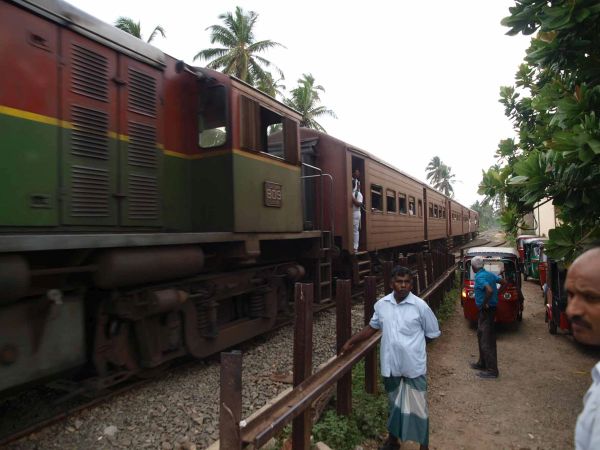
Same train as above, here passing a small level crossing.
Picture 21.5.2015 near Hikkaduwa by Heikki Hemmilä.
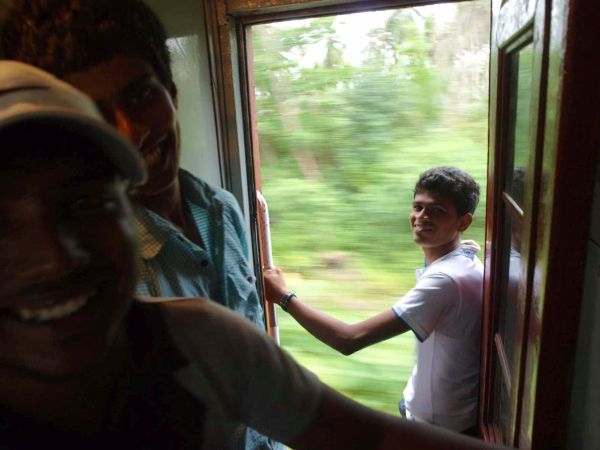
Inside a Sri Lankan short distance train. The doors are always open because of the heat. Most Sri Lankan passenger coaches are built in India, but some of the
newer ones come from China. This is still one of the old ones.
Picture by Heikki Hemmilä 21.5.2015 from a train leaving Hikkaduwa.
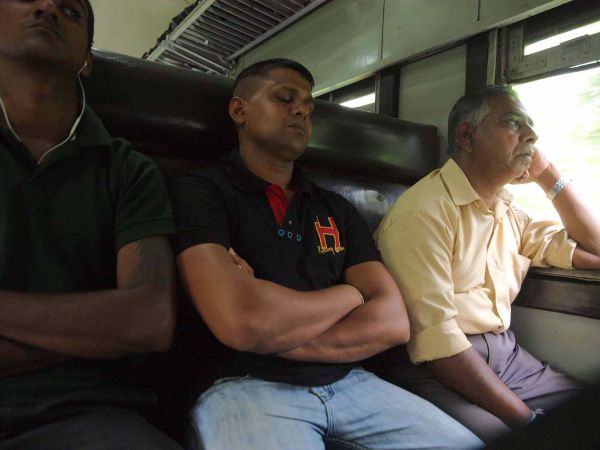
Same train as in the picture above. Sleepy passengers are snoozing in the hot train.
Picture by Heikki Hemmilä 21.5.2015 from a train leaving Hikkaduwa.
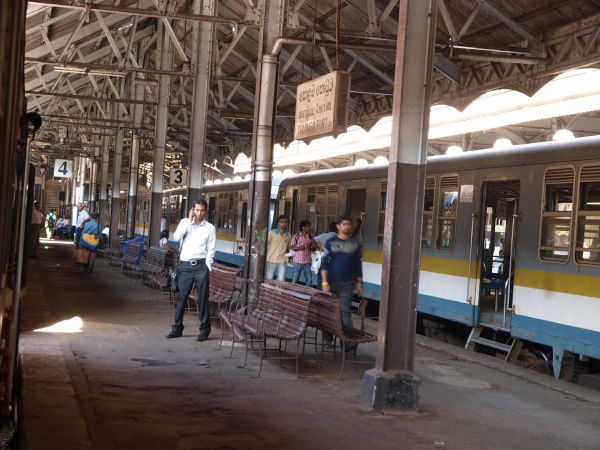
Sri Lanka Railways class S9 diesel multiple units waiting at the Colombo Fort station. These fairly modern DMUs were built by the China South Locomotive
& Rolling Stock Corporation already in 1991, but they entered service only in year 2000. 15 sets were delivered. It is a six coach formation, where two
coaches are powered. Top speed is 100 km/h and they have MTU 12V396TC14 V12 type engines producing 1180 kW of power per train. The system is diesel-electric.
Picture at Colombo Fort station by Heikki Hemmilä 7.2.2013.
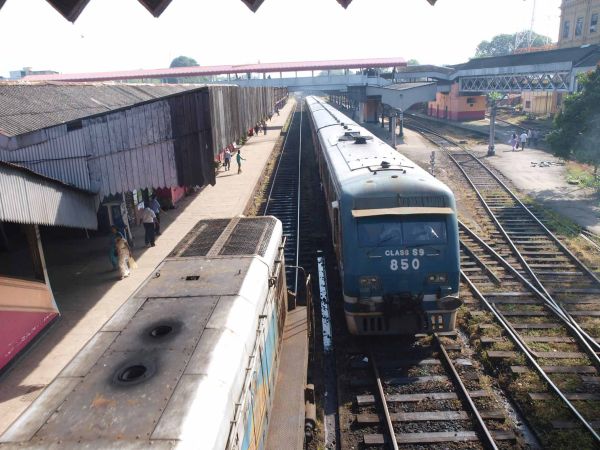
Front part of another class S9 diesel multiple unit.
Picture at Colombo Fort station by Heikki Hemmilä 7.2.2013.
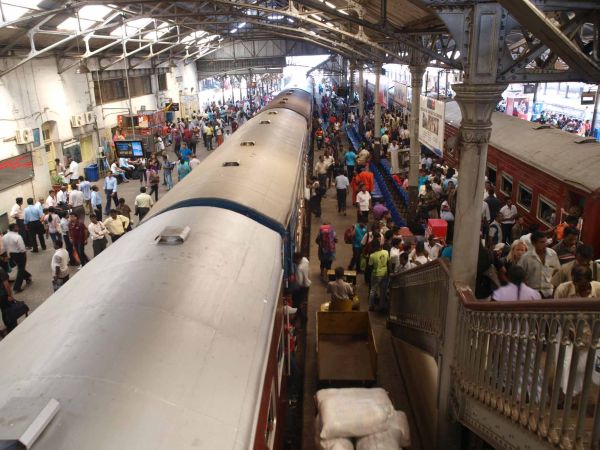
Rush hour in Colombo.
Picture at Colombo Fort station by Heikki Hemmilä 7.2.2013.
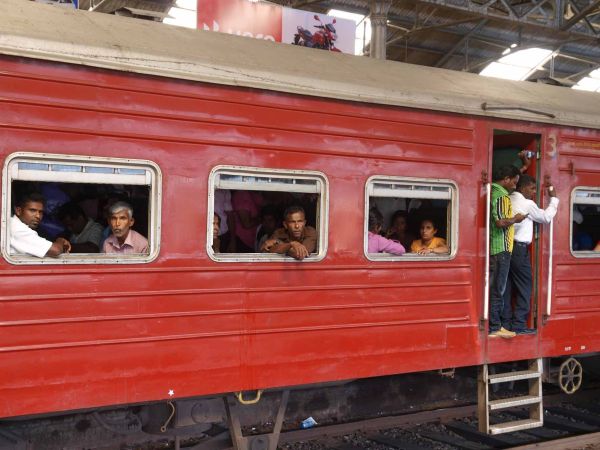
A typical Sri Lankan third class coach, used in short distance trains around Colombo. These coaches are built in India.
Picture at Colombo Fort station by Heikki Hemmilä 7.2.2013.
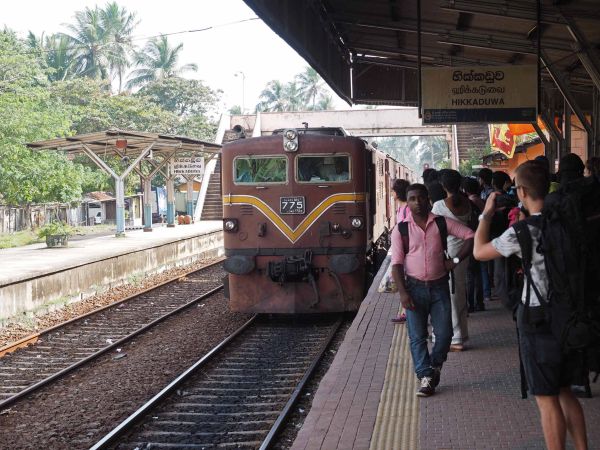
The class M5 locomotive was originally built by Hitachi and they date back to 1979. As part of a major modernisation project Sri Lanka Railways modernised
a few M5s by installing totally new diesel engines. This one is classed as M5C which means that this machine has received a totally new Caterpillar engine
making it a 1600 horsepower machine. The machine weighs 66 tons and runs on four axles (BoBo). Top speed is 97 km/h.
Photo from Hikkaduwa station 15.2.2018 by Heikki Hemmilä.
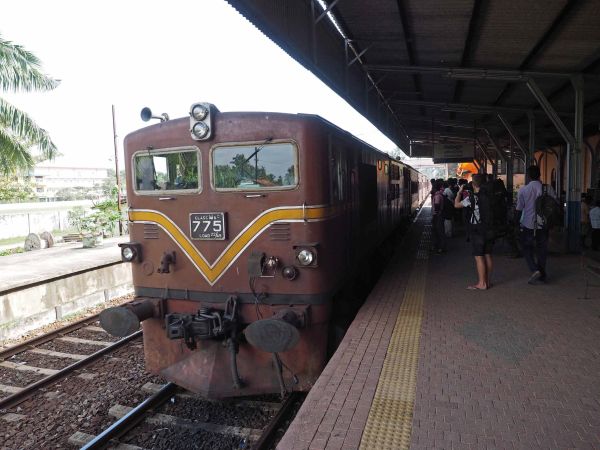
Another view of the same M5C locomotive as in the picture above.
Photo from Hikkaduwa station 15.2.2018 by Heikki Hemmilä.

Inside view of a Sri Lankan commuter train. This train was pulled by the same M5 locomotive shown in pictures above.
Photo from a train running from Galle to Colombo 15.2.2018 by Heikki Hemmilä.
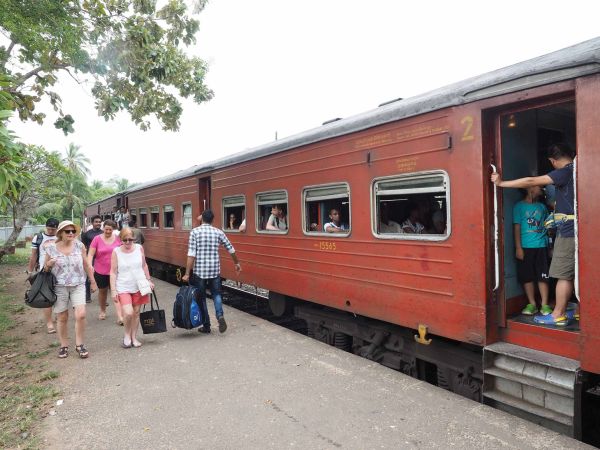
Outside view of the same coaches as in the picture above.
Photo from a train running from Galle to Colombo 15.2.2018 by Heikki Hemmilä.
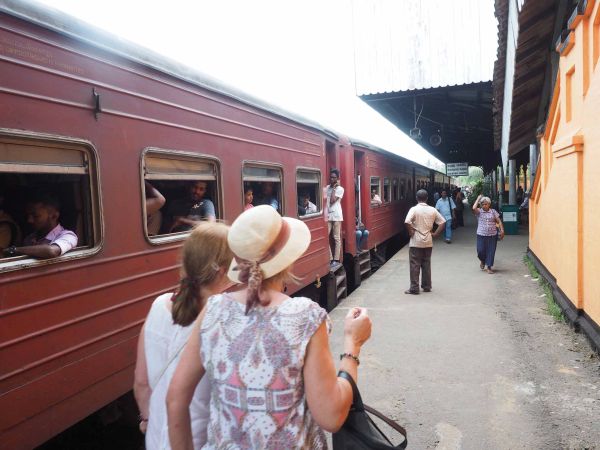
Same train as above, here stopping at Kalutara south station.
Photo from a train running from Galle to Colombo 15.2.2018 by Heikki Hemmilä.
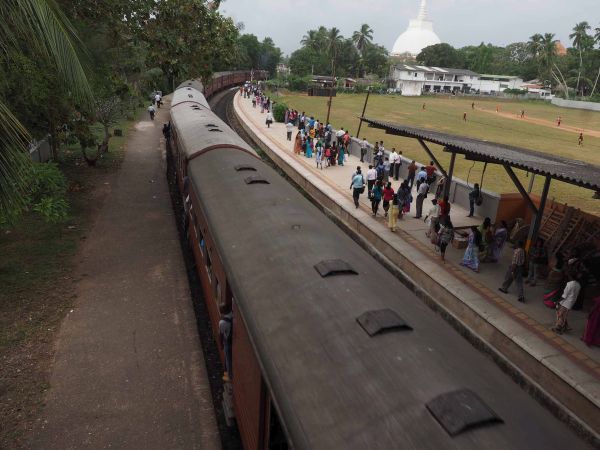
Same train as above, seen from above. Sri Lankan commuter trains can be really long.
Photo from a train running from Galle to Colombo at Kalutara south 15.2.2018 by Heikki Hemmilä.

Still another picture of the same train.
Photo from a train running from Galle to Colombo at Kalutara south 15.2.2018 by Heikki Hemmilä.

Train tracks near Hanwella.
Picture 15.2.2018 by Heikki Hemmilä.

